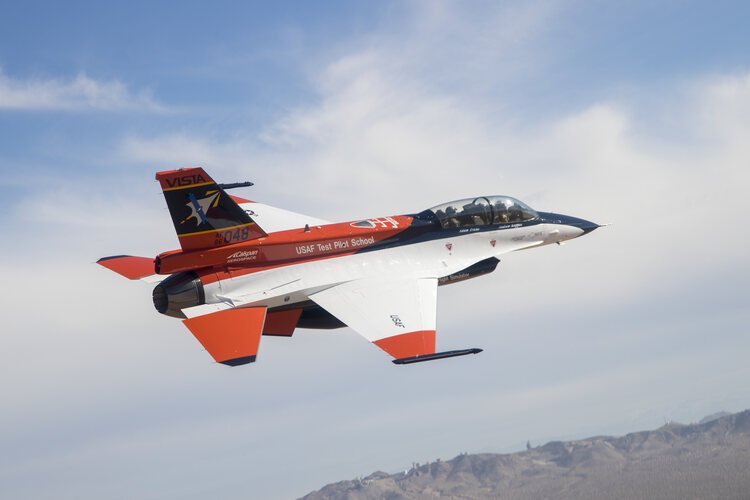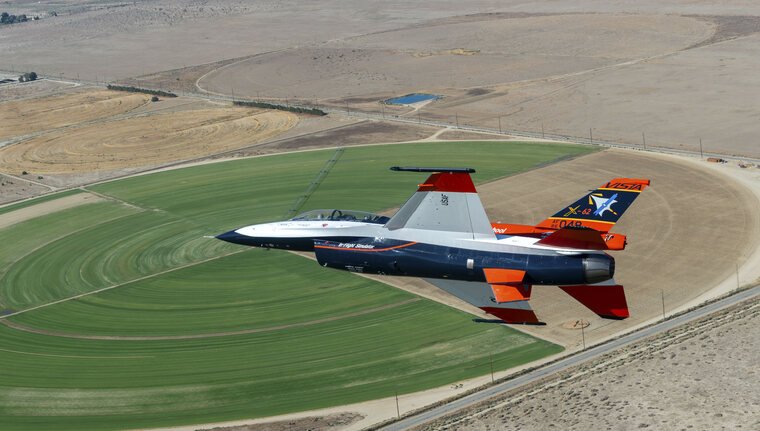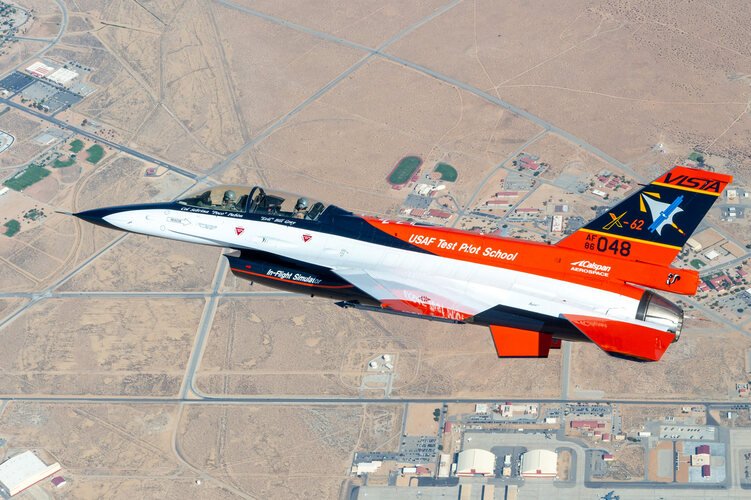The U.S. Department of Defense has successfully demonstrated the ability of artificial intelligence (AI) to autonomously pilot a fighter aircraft in a historic first that occurred during flight tests at Edwards Air Force Base in early December.
In 12 real-world test scenarios, an AI-controlled fighter jet racked up more than 17 hours of flight time while autonomously executing advanced fighter maneuvers, including simulated aerial dogfights with mock adversarial aircraft.
In 2020, the Air Force tested an AI algorithm named “ARTUµ” to control the sensor and navigation systems of a U-2 “Dragon Lady” spy plane.
Recent tests, however, mark the first time artificial intelligence has ever been used to pilot a tactical fighter aircraft, representing a significant milestone in the military use of AI-controlled systems.
The breakthrough stems from a joint research venture involving the Air Force Research Laboratory (AFRL), Defense Advanced Research Projects Agency (DARPA), and the Air Force Test Center, headquartered at Edwards Air Force Base, roughly 60 miles north of Los Angeles, California.


The AI-controlled aircraft used during testing was a modified F-16D multirole fighter aircraft, known as the X-62A “Variable Stability In-flight Simulator Test Aircraft,” or VISTA, developed by Lockheed Martin Skunk Works, in collaboration with Calspan Corporation.
The X-62A is a one-of-a-kind experimental aircraft outfitted with software that allows it to mimic the performance characteristics of other aircraft.
Used as a testbed for new systems, in recent years, VISTA has notably contributed to the development of Direct Voice Input and the “Virtual HUD,” which have been incorporated into the cockpit design of the F-35 Lightning II.
According to Lockheed Martin, in 2021, the X-62A was upgraded with the System for Autonomous Control of Simulation (SACS), which allows the aircraft to “conduct the most advanced flight test experiments emphasizing autonomy and AI.”
“VISTA will allow us to parallelize the development and test of cutting-edge artificial intelligence techniques with new uncrewed vehicle designs,” Dr. M. Christopher Cotting, U.S. Air Force Test Pilot School director of research, said in a press release issued by Lockheed Martin.
“This approach, combined with focused testing on new vehicle systems as they are produced, will rapidly mature autonomy for uncrewed platforms and allow us to deliver tactically relevant capability to our warfighter.”
In recent flight tests conducted December 1-16, 2022, the AI-controlled X-62A performed several advanced fighter maneuvers thanks to two AI-driven autonomy programs: AFRL’s Autonomous Air Combat Operations, or AACO, and DARPA’s Air Combat Evolution, or ACE.
“AACO’s AI agents performed one-on-one beyond-visual-range, or BVR, engagements against a simulated adversary, and ACE’s AI agents performed within-visual-range maneuvering, known as dogfighting, against constructive AI red-team agents,” read a statement by the Air Force.
“Both teams’ AI agents executed autonomous tactical maneuvering while maintaining real-world airspace boundaries and optimizing aircraft performance.”
DARPA program manager for ACE, Air Force Lt. Col. Ryan “Hal” Hefron, expanded on some of the AI-controlled fighter jet’s test scenarios.
“We conducted multiple sorties [takeoffs and landings] with numerous test points performed on each sortie to test the algorithms under varying starting conditions, against various simulated adversaries, and with simulated weapons capabilities,” Lt. Col. Hefron explained. “We didn’t run into any major issues but did encounter some differences compared to simulation-based results, which is to be expected when transitioning from virtual to live.”
“This highlights the importance of not only flight testing advanced autonomous capabilities but doing so on testbeds like VISTA, which allowed us to rapidly learn lessons and iterate at a much faster rate than with other air vehicles.”
SACS upgrades to the X-62A are built on open systems architecture, which allows different software systems to be rapidly swapped out and tested.
“In several instances, pilots completed the tests for ACE and AACO within hours of each other after engineers switched autonomy algorithms onboard the X-62A in minutes,” said an Air Force official familiar with the December flight tests. “The X-62A is rapidly accelerating the speed at which autonomy algorithms are tested.”
The potential for AI-controlled fighter aircraft could have significant implications for the future of military aviation as AI becomes an increasingly important tool in enhancing aircraft capabilities.


The potential for autonomous weapon systems also raises ethical and moral questions and the need for robust safety protocols. It remains to be seen how the military will use this technology and whether the public will support its deployment.
According to the DoD, the autonomy programs used during recent AI-controlled flight tests, AACO and ACE, are designed to assist human pilots, not to remove them from the cockpit.
“The goal of AACO is to develop and fly an advanced AI-driven autopilot capable of performing aviate and navigate functions and autonomous behaviors such as advanced intelligence, surveillance and reconnaissance, and BVR combat,” reads a statement by the Air Force.
As for ACE, DARPA says the goal is to develop “trusted, scalable, human-level, AI-driven autonomy” for within-visual-range air combat (dogfighting), to allow a human pilot to focus on “larger battle management tasks in the cockpit.”
Tim McMillan is a retired law enforcement executive, investigative reporter and co-founder of The Debrief. His writing typically focuses on defense, national security, the Intelligence Community and topics related to psychology. You can follow Tim on Twitter: @LtTimMcMillan. Tim can be reached by email: tim@thedebrief.org or through encrypted email: LtTimMcMillan@protonmail.com

